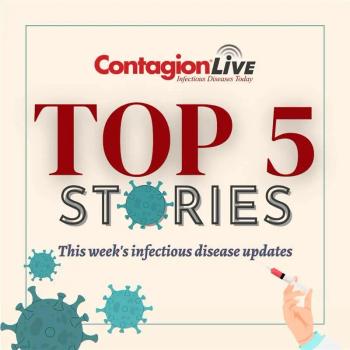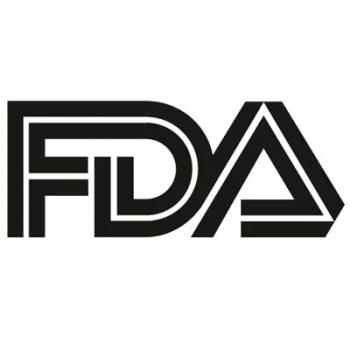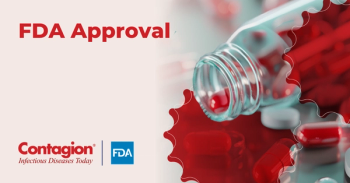
Nationwide Avian Flu Response Gains Momentum, Yet Urgent Action Remains Essential
The ongoing H5N1 avian flu outbreak has severely impacted U.S. poultry and dairy industries, prompting a $1 billion USDA response strategy that includes biosecurity, vaccination research, and innovation funding. With growing concern over viral mutations affecting humans and livestock, rapid, field-based diagnostic tools offer critical support in accelerating detection and containment efforts.
Since H5N1, more commonly known as avian or bird flu, first appeared in commercial poultry and backyard flocks in the US in February 2022, the threat of the Highly Pathogenic Avian Influenza (HPAI) virus has wreaked havoc among the poultry and livestock industry for producers, veterinarians and government agencies.1
As of May 2025, the Centers for Disease Control and Prevention (CDC) reports that more than 169 million birds have been affected, and avian flu has been detected in flocks in all 50 states and Puerto Rico.2 The total number of egg-laying chickens during December 2024 averaged 373 million,3 according to the U.S. Department of Agriculture (USDA); however, in March 2025, the total layers in the U.S. was about 351 million.4 Since November 2024, the costs associated with the ongoing outbreak have exceeded $1.4 billion,5 including $1.25 billion in indemnity and compensation payments to producers whose flocks were culled.
The ongoing threat and economic toll have led the United States Department of Agriculture (USDA) to initiate a $1 billion dollar comprehensive strategy 6 to curb HPAI, protect the US poultry industry and lower egg prices, in addition to its existing funding to indemnify growers for depopulated flocks. The agency is taking a five-pronged approach to prevent the introduction or spread of avian flu, as well as support America’s farmers and ranchers by:
- Investing in gold-standard biosecurity measures for all U.S. poultry producers
- The USDA’s Animal and Plant Health Inspection Service (APHIS) will lead this $500 million expansion of biosecurity assessments and audits 7
- Increasing relief to aid farmers and accelerate repopulation
- Removing unnecessary regulatory burdens on the chicken/egg industry to further innovation and reduce consumer prices
- Exploring pathways toward vaccines, therapeutics and research to improve response strategies (eg, diagnostics, biosecurity, surveillance) for the protection of egg laying chickens to reduce instances of depopulation
- In April, the $100 million USDA-led initiative, HPAI Poultry Innovation Grand Challenge Funding Opportunity,8 announced that it was seeking proposals for projects in these areas
- Considering temporary import-export options to reduce costs on consumers and evaluate international best practices
Poultry aren’t the only agricultural animals being affected by the virus. H5N1 has spread to dairy cows in 17 states.9 The B3.13 variant of H5N1 is spreading so quickly among dairy cattle in California that the governor declared a state of emergency. Not only are sick cows less productive, but their milk is heavily infected with the virus and must be destroyed. Following California’s lead, Iowa, Louisiana and Colorado, have also issued emergency/disaster declarations. Representatives from Louisiana and Colorado, as well as Pennsylvania, presented on their surveillance, public health actions, and overall emergency preparedness and response efforts to H5N1 at the National Governors Association in February.
The risk to humans is low, but real and growing larger all the time, even though the virus does not currently spread efficiently among people. The virus has already mutated, is spreading among cattle and appears to be making progress toward doing so in people. To date, there have been 70 reported human cases in the US and 1 death.9
A study published mid-January 2025 10 demonstrated that the H5N1 virus isolated from a human patient displayed mutations that enabled it to replicate efficiently in human cells, which has the potential to make it even more deadly to people. Other analyses show that just a single mutation could let the virus target receptors on human cells. The virus has been detected in pigs, which increases the risk because pigs can contract both human and bird variants of influenza allowing the two variants to exchange genes.
The B313 variant, which is most common in cattle, hasn’t posed a serious threat to individuals who have contracted the virus as a result of contact with infected cattle or contaminated milk. Globally, however, there is a 50% mortality rate among the roughly 900 confirmed cases of H5N1 infection in cattle. Unfortunately, cattle have been shown to be infected with the dangerous N1.1 variant, which had previously been found only in birds. This is the same variant that killed a man in Louisiana and hospitalized a child in British Columbia.11 It’s a very concerning spillover event.
The Need to Move Quickly
Effectively fighting any contagious disease requires the ability to test for it, and in the US, only authorized USDA laboratories can do so using polymerase chain reaction (PCR)-based diagnostics. PCR is a highly precise test, but slow to return results due to the time it takes to ship samples to the lab and process them. Since many of these labs don’t have infinite capacity, bottlenecks occur in heavy outbreaks, which further slows results.
While waiting days or weeks for results, the virus spreads through flocks or herds and health authorities work with data from tests that are days, maybe even weeks old. The slow response also makes proactive testing extremely challenging. For instance, if cattle need to be transferred from one herd to another, testing them for H5N1 could help prevent it from spreading, but centralized testing is only effective if results come quickly.
The slow rate of getting test results is also a problem for people. Antivirals are only effective early in the course of the disease, and differentiating seasonal flu from H5N1 requires a daisy chain of multiple laboratories. By the time results arrive, it may be too late for early treatment to have any effect. These delays also make it difficult to regularly test dairy workers who are in close contact with cattle and milk that could be infected.
The Ability to Know Sooner and Act Faster
In its $1 billion dollar strategy to curb HPAI, the USDA has recognized the need for increased bio-surveillance and other innovative solutions to get ahead of outbreaks and minimize depopulation of egg-laying chickens. At Alveo Technologies, we have developed a paradigm-shifting solution to help with biosecurity and surveillance. The Alveo Sense Poultry Avian Influenza Test is a portable molecular test for H5N1 made possible by IntelliSense, a patented method of direct electrical sensing of nucleic acid amplification. The palm-sized analyzer allows users to test at the point of need— on the farm and in the field—for different pathogens and receive accurate and rapid results in about 45 minutes via a mobile app. Through our Alveo Vista portal, the raw data and analytics from these results can be automatically geotagged, uploaded to the cloud in a private and secure environment, and then exported for regulatory agencies and state veterinarians to have actionable insights at light speed. Our technology is already in use in the EU and Middle East.
The ability to know sooner and act faster will allows producers, veterinarians and government agencies to better manage and make decisions quickly regarding the avian flu. Our technology could also expedite and support processes within USDA labs to help make their testing more cost-effective and efficient.
The USDA has a superb record of ensuring that diagnostics are effective and safe, and its commitment to help curb the avian flu catastrophe is encouraging. The agency’s current initiatives, along with biotech’s existing testing technology, have the potential to further accelerate development of innovative solutions, while simultaneously informing evidence-based policy. We believe that every problem has a clear and oftentimes simple solution when you apply the right knowledge and are open to different perspectives and collaboration. By working together, we can keep ahead of this growing risk to help ensure animal and public health safety.
References
1.2020-2024 Highlights in the History of Avian Influenza (Bird Flu) Timeline. CDC. April 30, 2025 Accessed June 11, 2025.
https://www.cdc.gov/bird-flu/avian-timeline/2020s.html
2.USDA Reported H5N1 Bird Flu Detections in Poultry. CDC. June 6, 2025. Accessed June 11, 2025.
https://www.cdc.gov/bird-flu/situation-summary/data-map-commercial.html
3.December Chickens and Eggs. USDA. January 22, 2025. Accessed June 11, 2025.
4. Chickens and Eggs. USDA. April 21, 2025. Accessed June 11, 2025.
5.Payment of Indemnity and Compensation for Highly Pathogenic Avian Influenza. Federal Register. December 31, 2024. Accressed June 11, 2025.
https://www.federalregister.gov/documents/2024/12/31/2024-31384/payment-of-indemnity-and-compensation-for-highly-pathogenic-avian-influenza
6. USDA Invests Up To $1 Billion to Combat Avian Flu and Reduce Egg Prices. USDA. February 26, 2025. Accessed June 11, 2025.
https://www.usda.gov/about-usda/news/press-releases/2025/02/26/usda-invests-1-billion-combat-avian-flu-and-reduce-egg-prices
7. USDA Announces Biosecurity Assessments and Audits to Support Avian Influenza Prevention. March 19, 2025. Accessed June 11, 2025.
https://www.aphis.usda.gov/news/agency-announcements/usda-announces-biosecurity-assessments-audits-support-avian-influenza
8.USDA Announces Next Steps in the Effort to Support the Fight Against Avian Influenza. USDA. March 20,2025. Accessed June 11, 2025.
https://www.aphis.usda.gov/funding/hpai-poultry-innovation-grand-challenge
9.H5 Bird Flu: Current Situation. CDC. June 6, 2025. Accessed June 11, 2025.
https://www.cdc.gov/bird-flu/situation-summary/index.html
10. Study reveals dangerous mutations in H5N1 bird flu. News Medical Life Sciences. January 16, 2025. Accessed June 11, 2025.
https://www.news-medical.net/news/20250116/Study-reveals-dangerous-mutations-in-H5N1-bird-flu.aspx
11.Genetic Sequences of Highly Pathogenic Avian Influenza A(H5N1) Viruses Identified in a Person in Louisiana. CDC. Decmeber 26, 2024. Accessed June 11, 2025.
https://www.cdc.gov/bird-flu/spotlights/h5n1-response-12232024.html
Newsletter
Stay ahead of emerging infectious disease threats with expert insights and breaking research. Subscribe now to get updates delivered straight to your inbox.



















































































































































































































































































